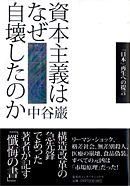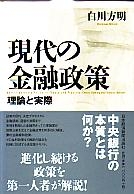研究員お勧めの書籍を独自の視点で紹介

2012年11月19日
本書が取り上げる「ジュガード(Jugaad)」は、ヒンズー語で「間に合わせ」を意味し、限られた資源を利用して目先の課題を克服するというヒンズーの教え、あるいは無数の障害を乗り越えながら粘り強く改良を重ねることを指す。本書ではジュガードの考え方を活用した会社としてGE、Siemens、タタ、IBMなど30以上のケース・スタディを説明した上で、ジュガードによるイノベーションが現在の事業環境でいかに必要かを丁寧に説明している。新興国を活用したグローバル化を考える上で、是非読んでおきたい良書である。
Jugaad is a commonly used Hindi word that means an improvised solution born from ingenuity and using scarce resources. It has become the new management trend and this spirit of Jugaad is not limited to India. It is practiced across many other countries as well - Brazilians have their own word for this approach ‘gambiarra’, the Chinese call it ‘zizhu chuangxin’, Kenyans refer to it as ‘jua kali’, and the French use the term ‘Systeme D’.
The forward note of the book asserts “This is a time of increasing complexity and greater scarcity of resources, of fractured financial models in the West, and confidently emergent economic powerhouses in the east and south.” So, what can global companies learn from emerging markets - such as India, Brazil, China and Kenya - about doing more with fewer resources?
The authors argue that companies should look to emerging markets for a new approach to frugal and flexible innovation. Much can be learnt from street entrepreneurs in the Philippines or industrial conglomerates in India and China. Innovation is a key pillar of business growth for global companies. But in the current tough economic environment, they cannot rely on the old formula that has sustained innovation efforts for decades - expensive R&D projects and highly-structured innovation processes. For instance, according to the management consultancy firm Booz & Company, in spite of spending $550 billion on R&D in 2010 alone, the thousand companies that spend the most on R&D have generated limited returns on these investments.
In a fast-paced, increasingly complex and resource-constrained world, there is a need for companies to act with agility and differentiation in order to innovate. Realizing this, leading Western companies such as 3M, GE, Siemens, Renault-Nissan, IBM, and Google are now using Jugaad to generate breakthrough growth.
The book outlines six guiding principles of Jugaad: (1) seek opportunity in adversity, (2) do more with less, (3) think and act flexibly, (4) keep it simple, (5) include the margin, and (6) follow your heart.
The corporate leaders can find opportunity in adversity by adapting to changing circumstance and improvising solutions with a growth mindset. IBM is an example of a company that has been successful in cultivating a growth mindset among its leaders. They were successful to proactively disrupt the company many times, completely reinventing IBM's business model again and again. It has gone from selling tabulators to typewriters to mainframes to networked PCs to software and services - effectively leveraging one technology wave after another.
The most outstanding thing about Jugaad innovators is that they continuously look for new ways to do more with less and deliver higher value to customers at a lower cost. A very good example is the Nano car from Tata Group. This $2,000 car was made first for the Indian market, but is now being adapted for Europe and other markets, setting new industry benchmarks. Another example is GE Healthcare's Mac 800 - a portable, low cost ECG unit first developed for emerging markets that has received FDA approval for the US market.
By thinking and acting flexibly, Jugaad innovators can deal with unanticipated challenges and grab unexpected opportunities - such as changing customer needs - faster than their competitors. A good example is Haier, a Chinese consumer good company. Once, its customer service centre received a complaint from a farmer about constantly clogged drainpipe in his washing machine. The company's technician found that the problem was because the farmer was washing mud off potatoes (not the purpose of washing machine). However, sensing a big market opportunity, Haier went on to develop models that can peel potatoes and even churn yak milk from butter. These inventions inspired Haier to introduce, in 2009, a washing machine to wash clothes without detergent. This ground-breaking innovation led Haier to the number one position in the laundry equipment market not only in China, but also around the world.
In order to promote innovation, it is important for business leaders to empower employees at every level to think and act like Jugaad innovators. What makes 3M so innovative can be understood from its 15% program - a radical initiative that allows employees to use 15% of their paid work time to pursues Jugaad innovations whether they succeed commercially (like Post-it products) or not. Corporate leaders should also go beyond the limits of their organization and seek out bright ideas from their customers, social media tools (Facebook, Twitters, etc.) as well as partner communities. For instance, IBM regularly conducts ‘jamming’ sessions, involving hundreds of customers and partners.
The Western companies have long embraced a “bigger is better” approach to innovation. However, consumers are increasingly put off by the complexity of technologies. Rather than offering over-engineered products, Jugaad innovators in emerging markets offer simple solutions that address customers' fundamental needs. The book cites examples of forward-thinking companies such as GE, General Motors, Siemens, and Philips that have started building simplicity in their products and services. Siemens came up with a new product strategy called “SMART” (Simple, Maintenance-friendly, Affordable, Reliable, and Timely-to-Market), in 2005. These products are being designed cost-effectively in emerging countries, using entirely local R&D talent. SMART products are now playing an important role in the growth of Siemens - the company generated US$ 28.7 billion revenue from entry-level markets in fiscal 2010, which was double the amount in fiscal 2005. Going forward, Siemens plans to sell these products to recession-weary customers in the US and Europe as well.
The growing diversity of the workforce and customer base in Western countries, and the shrinking buying power of the middle class are forcing companies to find ways to serve marginal segments. Generally, companies tend to ignore this segment as they view it as unprofitable and complex to serve. However, this segment now carries more economic weight than ever before, and therefore, it makes business sense to include the marginal segments. It also helps companies connect better with the society. The commitment from the top management is essential to enable and sustain this transformation within a company. GE's Healthymagination program - aimed at making healthcare services affordable and accessible for the masses - is overseen by CEO Jeff Immelt himself.
Giving the example of Steve Jobs, the cofounder and former CEO of Apple, the authors stress that Jugaad innovators know their customers and products intimately and follow their intuition, empathy and passion to decide what products to make. Steve was an effective practitioner of the follow your heart principle. Many customers, analysts and media experts were convinced that there was no market for the iPad. Yet, Steve was very much interested in following his intuition and the iPad turned out to be a break-through innovation.
The authors emphasize that Jugaad is not a substitute to the traditional and structured approaches to innovation. Instead, it is a useful complement to this approach. Moreover, this approach is not limited to only corporate, but also has relevance for governments and non-government agencies to promote start-ups by local entrepreneurs.
Overall, this book is a very good reference guide on the topic of frugal innovation, one that can be recommended to C-level executives, product development teams, R&D units, sales & marketing teams, and decision makers. It highlights various aspects that enable global companies innovate by becoming more resourceful with scarce resources to compete and win in this complex world.























































































































